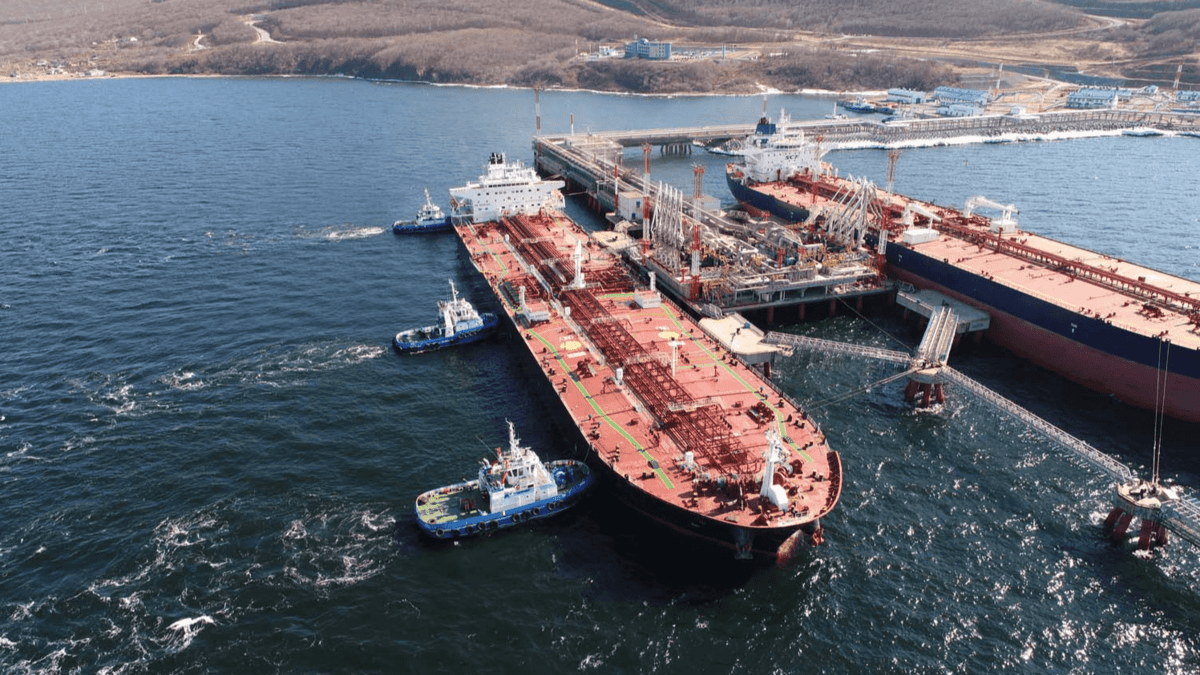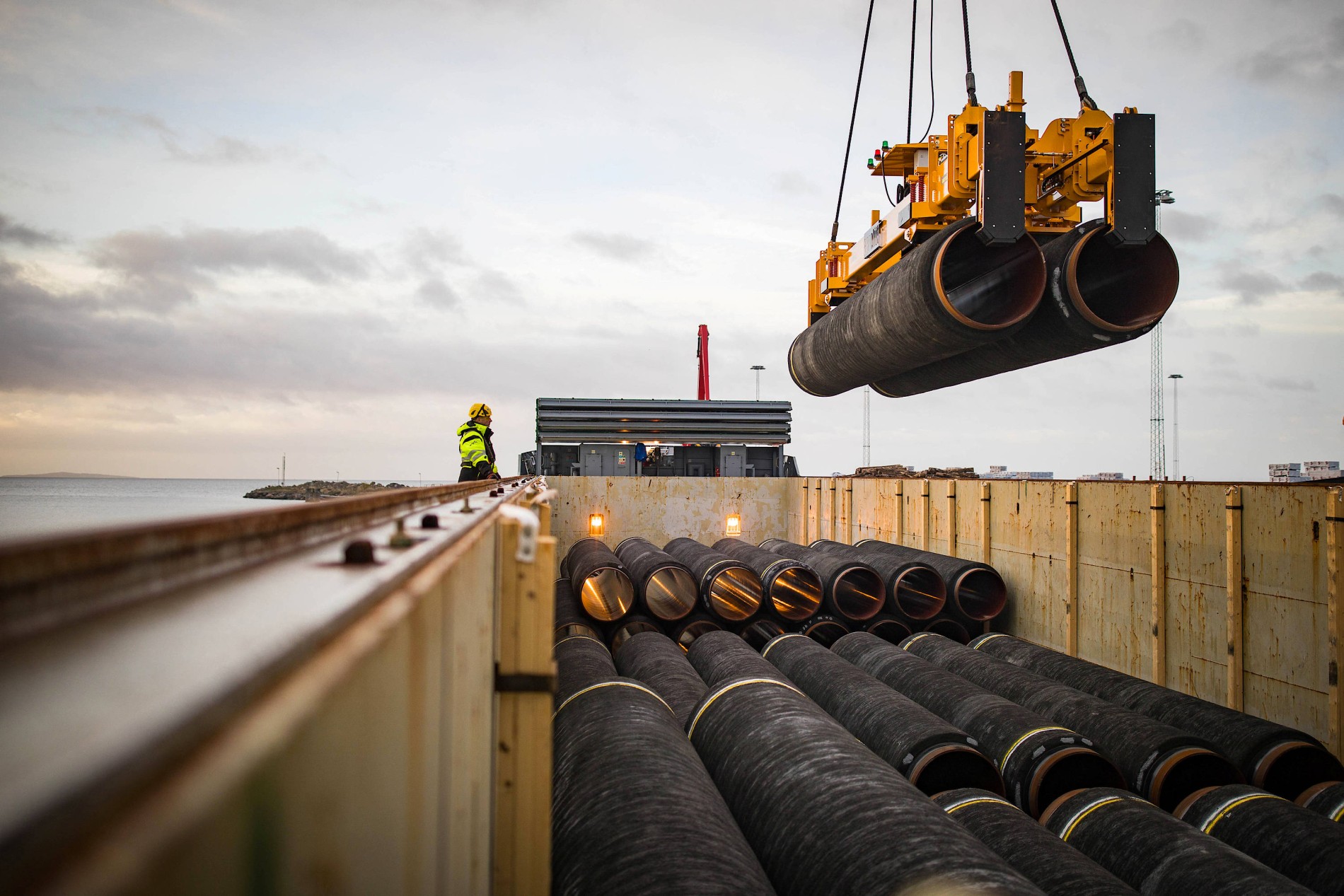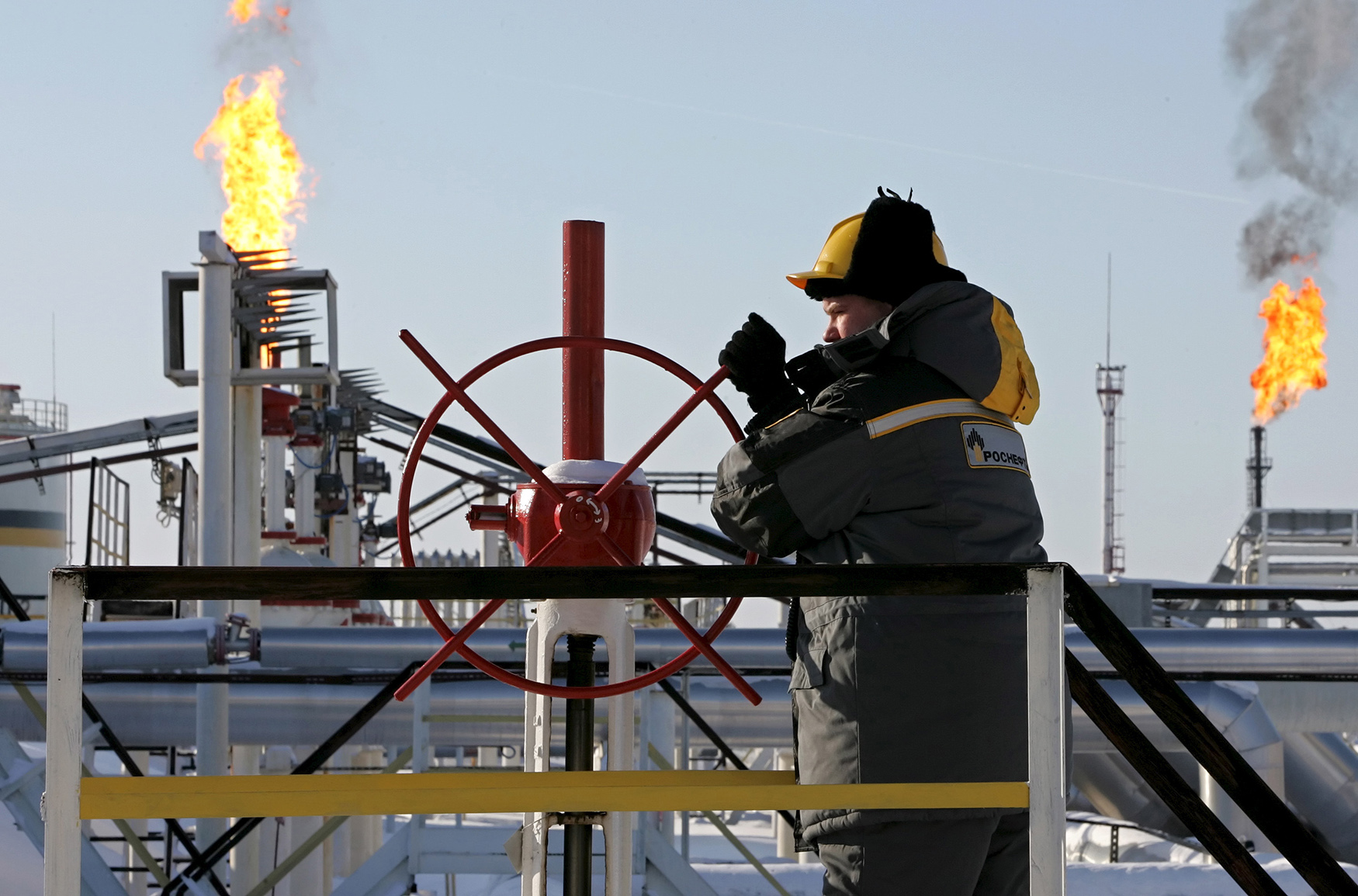Published 30 May 2023
Price monitoring agencies have failed to adapt to a market where Russian oil no longer sells through traditional channels. Russia's ports of Kozmino and Primorsk appear to be major outlets for sales to China and India, shaking up supply chains in secret negotiations priced well over the West's sanctions cap.
Since its illegal invasion of Ukraine in February 2022, Western and allied governments have imposed on Russia the most comprehensive suite of energy sanctions ever implemented. Despite this, Russia continues exporting large volumes of oil and natural gas to the world, providing the Kremlin with a major revenue stream with which to fund the war.
Despite the war, Russian oil and gas continues to flow through pipelines that cross Ukraine. Russia is contractually obligated to send more than 40 billion cubic meters of gas per year and around 300,000 barrels of oil per day via Ukraine. Sanctions have been deliberately designed to ensure this flow continues, undermining the effectiveness of the entire sanctions regime.
For the European Union (EU), the aim for their economic sanctions on energy is to “impose severe consequences on Russia for its actions and to effectively thwart Russian abilities to continue the aggression”.1 The US’ stated aims are similar.2 Clearly, the sanctions are failing to achieve their political objectives.
There is no reason to believe that new sanctions will be any more effective at stopping Putin’s war.
Sanctions on oil
Since the invasion of Ukraine, the EU, US, and aligned countries have introduced several sanctions packages seeking to crimp both the price and volume of Russian oil exports.
There have been six sanctions packages to date. The most prominent has been the price cap sanction. Implemented in December 2022, the EU, along with Group of Seven members and Australia, introduced a cap of US$60 per barrel on seaborne Russian crude oil to restrict Russian oil export revenue. The cap bans signatory countries from providing transportation, insurance, and financial services for Russian oil if it is sold above the cap. These services are dominated by Western companies.
Oil revenue continues to flow
The price cap has undoubtedly hurt the Kremlin’s bottom line. However, it has failed to seriously curb Russia’s ability to wage war in Ukraine.
The price cap initially appeared to be effective at reducing Russian oil revenue, which declined by almost a third in the first quarter of 2023 compared with the final quarter of 2022. At the outset of the cap, Brent traded at above US$80 per barrel. The Kremlin, it was believed, would be denied a significant boost to its revenues as it would have been forced to accept price discounts.3
Analysis based on official Russian data found that three-quarters of the drop in sales over the period can be directly linked to Western restrictions.4 In the first quarter of 2023, the International Energy Agency (IEA) found that these discounts led directly to a US$5.2 billion decline in Russian oil revenues as the price gap for Russian oil relative to Brent widened. Russia’s total oil revenue slipped from US$54.5 billion in the last three months of 2022 to US$38.8 billion in the first quarter of 2023.5 However, the cap is clearly being circumvented. The IEA calculated that the weighted average price for Russian crude exports once again rose above the US$60 per barrel price cap in April.6
The Far Eastern port of Kozmino appears to be the main outlet for this activity. The IEA has found that 95% of the volume exported from Kozmino breaches the price.7 Chinese purchases of premium Russian crude blends from Kozmino averaged US$71.80 per barrel.8
This contradicts mainstream commentary which suggests China has tried to leverage the price cap to extract significant discounts for Russian crude.
The paucity of reliable data further complicates the ability to monitor the impact of the price cap.
Oil price reporting agencies have failed to adapt to a market where Russian oil no longer sells through traditional, well-monitored, and easily observable channels. While Western refiners and oil traders typically share data with price monitoring bodies, Indian traders – another major buyer of Russian crude – do not.
There are similar challenges with Chinese traders.
Shipping rates for ferrying Russian oil to Asia are negotiated in private. The result is that the discounts cited by Western officials arguing in favor of the price caps are inaccurate and possibly exaggerated. Exacerbating this problem is that countries and companies involved have an interest in maintaining the pretence that Russian oil prices are low. The Kremlin wants to continue enjoying higher revenues and Indian and Chinese refiners want to maintain reliable and diverse supply.9
A reshaped oil market
The rise of India and China as major buyers of Russian oil exports has been the most dramatic impact of the sanctions packages.
As oil is a highly fungible commodity, Russian exporters have rapidly pivoted to Asia to sell the oil spurned by Europe. European countries which had previously been the dominant buyers, have been largely replaced by China and India, which in the first quarter of 2023 jointly accounted for close to 75% of Russia’s oil exports, compared to just 26% in 2021.10
In only a handful of months, the Kremlin has managed to re-engineer decades-old global oil trade patterns. To execute this pivot, Russia has successfully employed strategies perfected by Iran and Venezuela when facing comparable sanctions. These include creating an armada of ‘ghost ships’ that are unencumbered by sanctions, accepting payment for its oil in yuan and rubles rather than dollars.
India’s imports of Russian oil have grown 16-fold since the start of the war to an average of 1.6 million barrels per day in December 2022.11 China has more than doubled its imports of Russian oil since February 2022 and Russia has overtaken Saudi Arabia as the largest oil exporter to China.12
Prior to the invasion, the Russian port of Primorsk on the Baltic Sea exported primarily to Europe. Now its oil tankers sail halfway around the world to India.
Indian refiners have sought to capitalize on the price cap and resulting reduction in market access for Russian oil. Reports suggest India drove hard bargains with Russian suppliers, apparently paying just US$43.90 per barrel in the first quarter of 2023.13 Yet even this price is opaque and unlikely to reflect the true sum paid.
Using Indian customs data, Sergey Vakulenko, an energy scholar at the Carnegie Endowment for International Peace, showed that Indian importers of Russian crude paid almost the same price as for Brent.14 The explanation, Vakulenko suggests, is that at least part of the large discount quoted for local on Urals-grade Russian oil is pocketed by Russian exporters and intermediaries who charge a higher price in India.15 Much of this revenue likely flows back to the Kremlin.
Russian revenue from oil exports to China is similarly shrouded in secrecy.
What is clear is that the price cap has not succeeded in reducing Russia’s oil export revenues to the extent that there has been an impact on the Ukrainian battlefield.
Sanctions on gas
Unlike oil, Russian gas exports have not been subject to heavy sanctions by Western countries. Beyond restrictions on liquified natural gas (LNG) technology, which could have a long-term impact on Russia’s future production capacity, Russia’s gas sector is mostly free to sell to whomever it chooses. Instead of official sanctions, EU countries have instead sought to wean themselves off Russian gas. Much has been made of the EU’s success in this regard, with Germany often held up as the prime example.
However, this decision was driven as much by Kremlin decisions such as the cessation of exports via the Nord Stream 1 pipeline (the major pipeline from Russia to Germany), than by the actions of the EU.16 It is the Kremlin that has imposed restrictions on its export of gas, not the EU or West.
Vladimir Putin clearly wants to use the denial of gas exports as a means of weakening the EU’s hand. However, there are few alternative markets for the large volume of gas Russia previously exported by pipeline to the bloc.
Mutual dependence
Cheap Russian gas has been one of the key underpinnings of heavy industry in Europe and European countries have relied on pipelines carrying Russian gas for almost half of their total supply.17 At the start of the war in Ukraine, ten EU states relied on Russian gas for more than 75% of their import.18 There are few alternative sources of volume gas supply for the EU.
Russia is of course also reliant on the EU as an export market. Beyond pipelines going to the EU, Russia’s alternative is to try to sell its gas to new markets.
To do this it must export the gas as a bulk liquid (LNG). This involves chilling it to minus 162 degrees Celsius, loading the LNG on highly specialized tankers, and selling it to a user with an import terminal equipped to offload the cargo. Russia’s challenge is that there are few LNG import terminals globally for Russia to send its gas. The current global fleet of LNG tankers is also insufficient to transport the volume equivalent to Russia’s pre-war sales to Europe.
To replace Russian gas, the EU, led by Germany, the largest gas consumer in the bloc, looked for alternative sources of supply. The bloc imported more gas by pipeline from Azerbaijan and Norway, introduced gas consumption reduction policies, and increased its imports of LNG from all sources by more than 60% in 2022 compared with 2021.
Though the explicit intent of these measures was to reduce demand for Russian gas, Russia is still the second largest LNG supplier to the EU as a result.19
Herein lies the dilemma for both Russia and the EU.
Putin wants to leverage Europe’s need for Russian gas to punish the bloc. The EU wants to stop buying Russian gas.
But the relationship is mutually dependent to such a degree it cannot quickly be undone. This limits the EU’s ability to impact Russia’s military abilities in Ukraine.
Non-Russian pipelines do not have sufficient capacity and there are insufficient LNG import terminals in Europe to bring in alternative sources of supply in the volumes required. Though the EU is building new LNG import terminals, they typically take several years to build.20
Russia is also stuck with the EU. Unlike oil, Russia has limited capacity to divert gas exports in a comparable volume to that previously supplied to the EU.
China has been touted as one potential market, but the existing Power of Siberia Pipeline is relatively small and cannot be significantly expanded without a major overhaul. Putin has long advocated for a new pipeline connecting the two countries and engaged in a charm offensive with President Xi Jinping during Xi’s visit to Moscow in March. Xi demurred and is likely to continue to do so, as China has already agreed to another pipeline to Russia and commissioning both new projects would make Beijing as dependent on Russian gas as Europe was.21 Delaying also gives Xi more leverage.
Primarily due to Russia’s restrictions on pipeline gas exports to the EU, Russia’s gas sales will fall to 136 billion cubic metres (bcm) in 2023 from 241bcm in 2021.22 Whilst this is a dramatic fall, the exports still represent billions of dollars in revenue for the Kremlin.
Unless Putin’s tolerance for the economic siege inexplicably changes, energy sanctions will not seriously degrade the Kremlin’s ability to wage war in Ukraine.
***
[1] https://www.consilium.europa.eu/en/policies/sanctions/restrictive-measures-against-russia-over-ukraine/sanctions-against-russia-explained/
[2] https://www.whitehouse.gov/briefing-room/statements-releases/2022/03/08/fact-sheet-united-states-bans-imports-of-russian-oil-liquefied-natural-gas-and-coal/
[3] https://www.ft.com/content/b5c979d5-0728-4351-8ded-c8be55c41ff8
[4] https://kse.ua/wp-content/uploads/2023/04/Russian_Oil_Exports_under_International_Sanctions_23Q1_UPDATE26042023.pdf
[5] https://www.iea.org/reports/oil-market-report-april-2023
[6] https://kse.ua/about-the-school/news/russian-oil-exports-under-international-sanctions/
[7] https://kse.ua/about-the-school/news/russian-oil-exports-under-international-sanctions/
[8] https://kse.ua/about-the-school/news/russian-oil-exports-under-international-sanctions/
[9] https://www.economist.com/leaders/2023/02/01/why-the-wests-oil-sanctions-on-russia-are-proving-to-be-underwhelming
[10] https://kse.ua/wp-content/uploads/2023/04/Russian_Oil_Exports_under_International_Sanctions_23Q1_UPDATE26042023.pdf
[11] https://www.iea.org/reports/oil-market-report-april-2023
[12] https://www.reuters.com/business/energy/chinas-march-imports-russian-oil-may-hit-record-shiptracking-data-2023-03-02/
[13] https://www.nytimes.com/2023/02/07/business/russia-oil-embargo.html
[14] https://carnegieendowment.org/politika/89052
[15] https://carnegieendowment.org/politika/89052
[16] https://ecfr.eu/article/conscious-uncoupling-europeans-russian-gas-challenge-in-2023/
[17] https://ec.europa.eu/eurostat/statistics-explained/index.php?title=EU_imports_of_energy_products_-_recent_developments
[18] https://ec.europa.eu/eurostat/statistics-explained/index.php?title=EU_imports_of_energy_products_-_recent_developments
[19] https://ecfr.eu/article/conscious-uncoupling-europeans-russian-gas-challenge-in-2023/
[20] https://intellinews.com/gas-panic-in-2023-267169/
[21] https://ieefa.org/resources/europe-tries-cut-russian-ties-dependence-imported-lng-deepens
[22] https://www.rystadenergy.com/news/spurred-by-the-energy-crisis-global-lng-investments-will-now-peak-at-42-billion-i
© The Hinrich Foundation. See our website Terms and conditions for our copyright and reprint policy. All statements of fact and the views, conclusions and recommendations expressed in this publication are the sole responsibility of the author(s).






